The week at a glance
- Hudsonian Godwit in Somerset
- Great Blue Heron still in the Isles of Scilly
- Pied-billed Grebe(s) in Gloucestershire and Lancashire
- Harlequin Duck back in Aberdeenshire
- Cape Gull in Portugal
Late April isn't a time that you'd normally expect to produce sumptuous casts of Nearctic vagrants, yet that's what was on offer this week. Scilly's Great Blue Heron was sensationally upstaged by the sudden appearance of a Hudsonian Godwit, in almost all its summer glory, at Meare Heath, Somerset, on 25th.
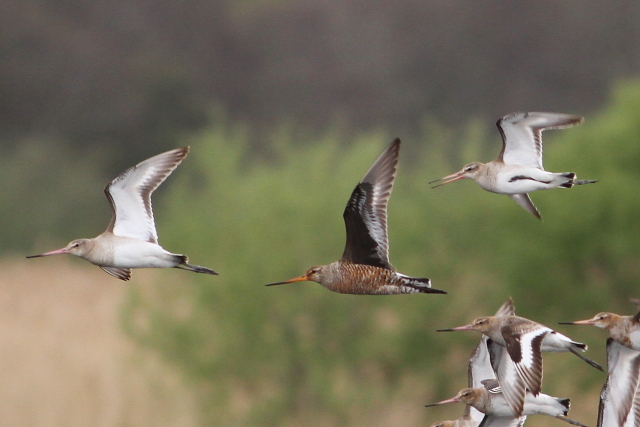
Hudsonian Godwit, Meare Heath, Somerset & Bristol (Photo: Peter Moore)
Actually, the bird was first seen late on the evening of Friday 24th but, with views inconclusive, the finder had sensibly decided to wait for the following morning to confirm the identification and release news. It's fair to say that a species last seen in Britain in September 1988 was unlikely to have been on anyone's radar that morning and, when the news broke early on Saturday, there was no doubt a fair share of disbelief among the British birding fraternity.
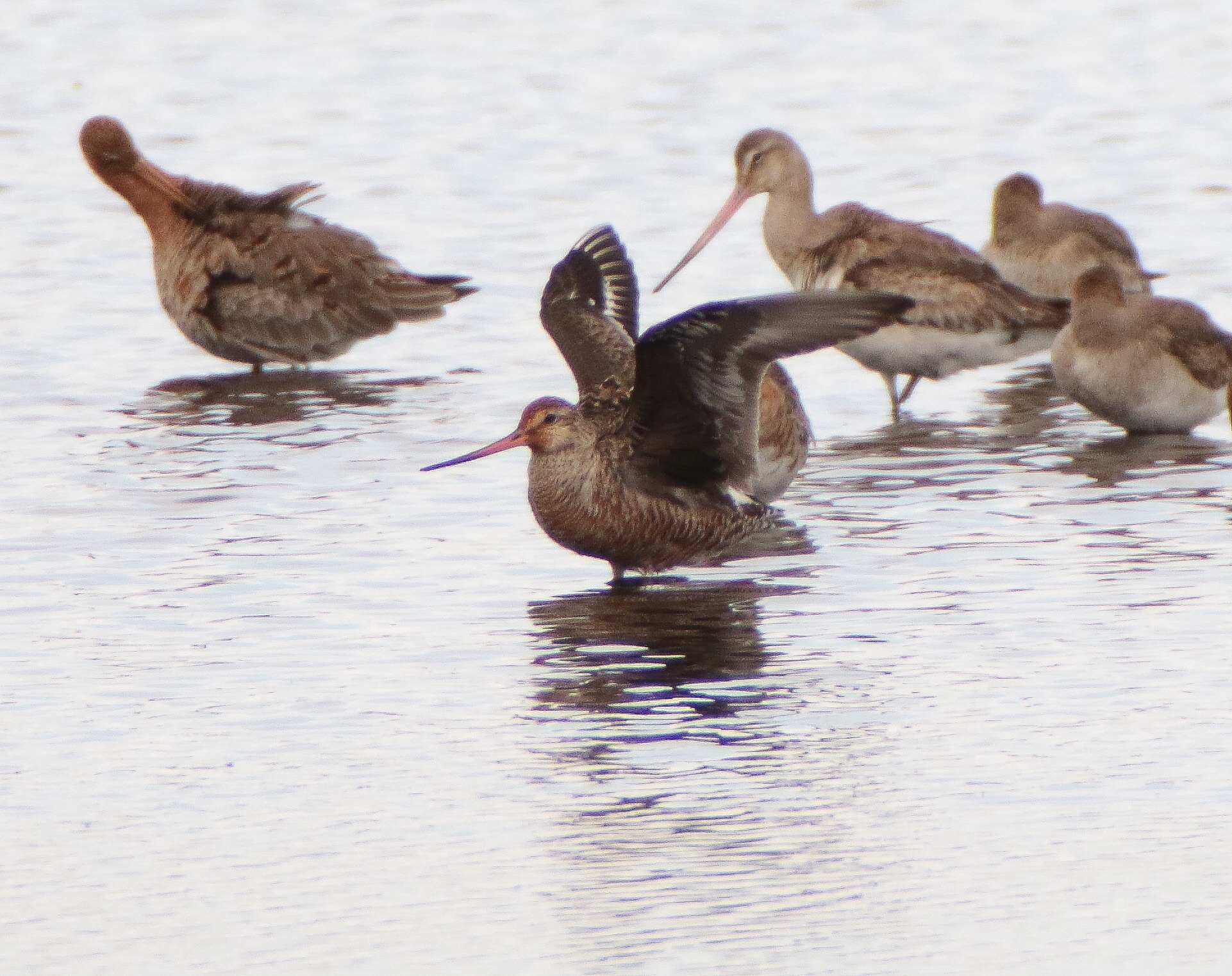
Hudsonian Godwit, Meare Heath, Somerset & Bristol (Photo: Jason Ward)
Many hundreds enjoyed respectable views as it fed, preened and rested among a 160-strong contingent of Icelandic Black-tailed Godwits throughout the morning and into the afternoon. However, rather like the 1988 bird, it didn't hang around for long. After a brief fly-around in the late afternoon it returned for a matter of minutes, only to fly off into the distance once more, never to return. Those that didn't see it will hope that it may relocate somewhere else in Britain but, given that it's now late April and many shorebirds are rushing north, an appearance in Iceland seems just as likely as the days tick by. The species has occurred only twice here before (records in 1981-82 and in 1983 are presumed to involve the same individual), so it's a rarity of the highest calibre and a beautiful-looking species to boot.
Hudsonian Godwit, Meare Heath, Somerset & Bristol (Video: somsvid)
The aforementioned Great Blue Heron was indeed still knocking about on the Isles of Scilly this week. Seemingly settled in the Big Pool area on Bryher until the end of the weekend, it once again moved islands on Monday, relocating back to St Mary's where it gave its best views to date. Aside from its occasional inter-island movements, the bird seems quite settled and it's entirely possible that it may linger in the islands for weeks (even months) to come — a number of previous Azorean records, for example, have involved birds that stayed for long periods.
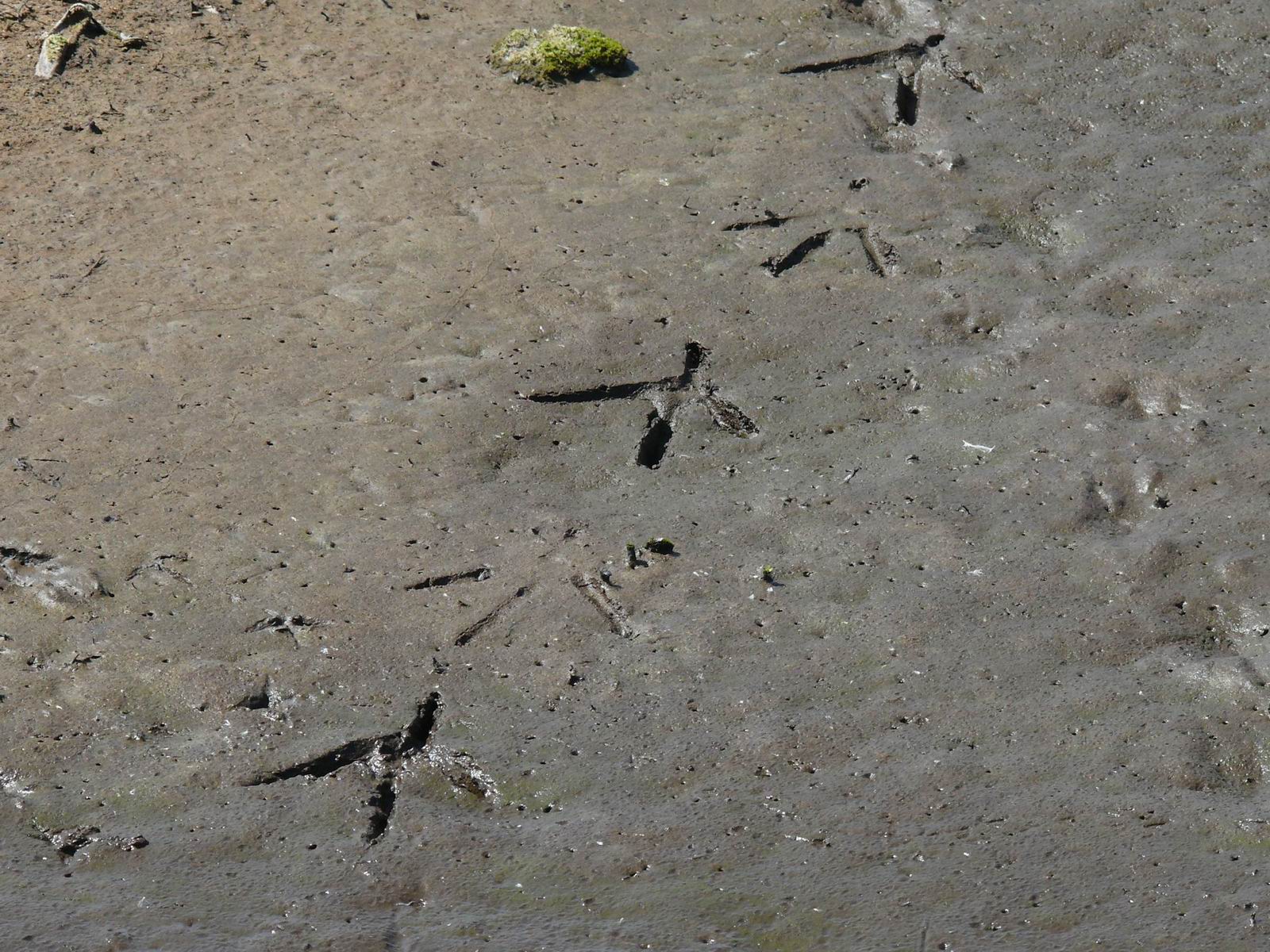
Great Blue Heron footprints, St Mary's, Isles of Scilly (Photo: Nigel Hudson)
Great Blue Heron, Bryher, Isles of Scilly (Video: Steve Evans)
There were two records of Pied-billed Grebe this week, although most likely only a single bird was involved. On Friday 24th one was found on the estuary at Berkeley, Glos, where it lingered throughout the day and showed fairly well. Disappointingly for godwit twitchers seeking a classy bonus bird, the grebe had moved on by the next morning, though it wasn't long before the species was once again making the headlines. In the late afternoon on Saturday, a breeding-plumaged bird was found at Leighton Moss, Lancs, where it has remained since.
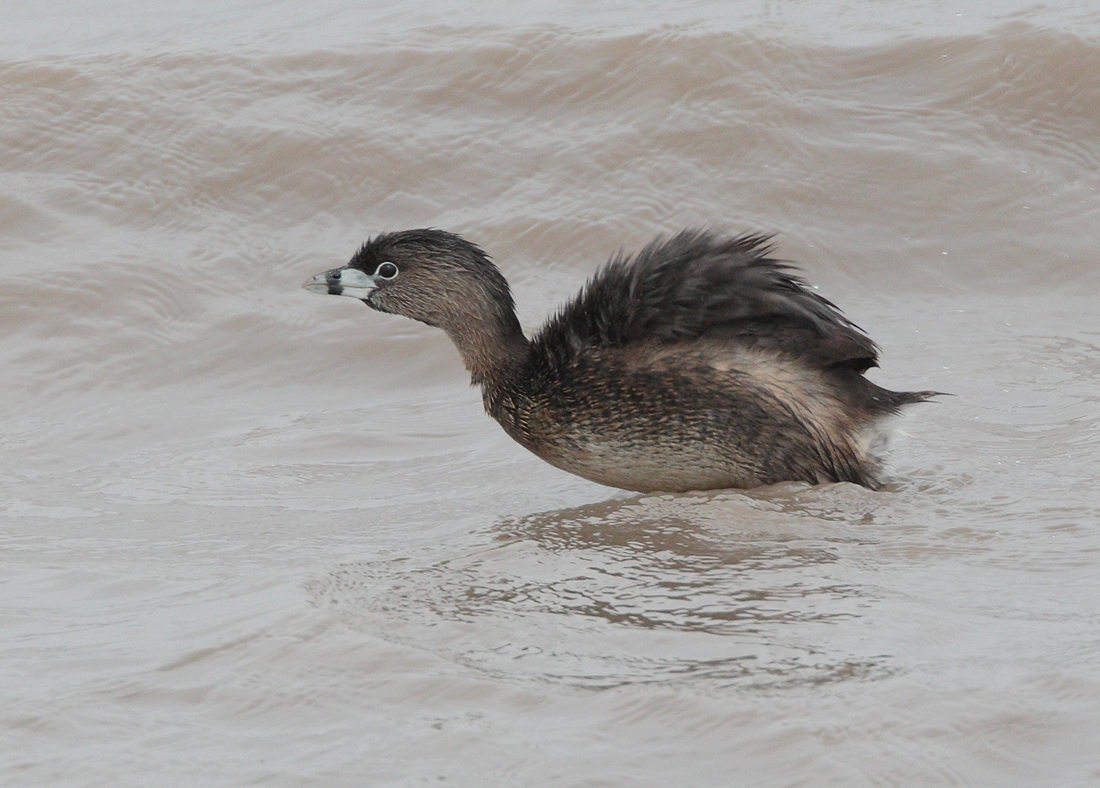
Pied-billed Grebe, Berkeley Power Station, Gloucestershire (Photo: Allan Chard)
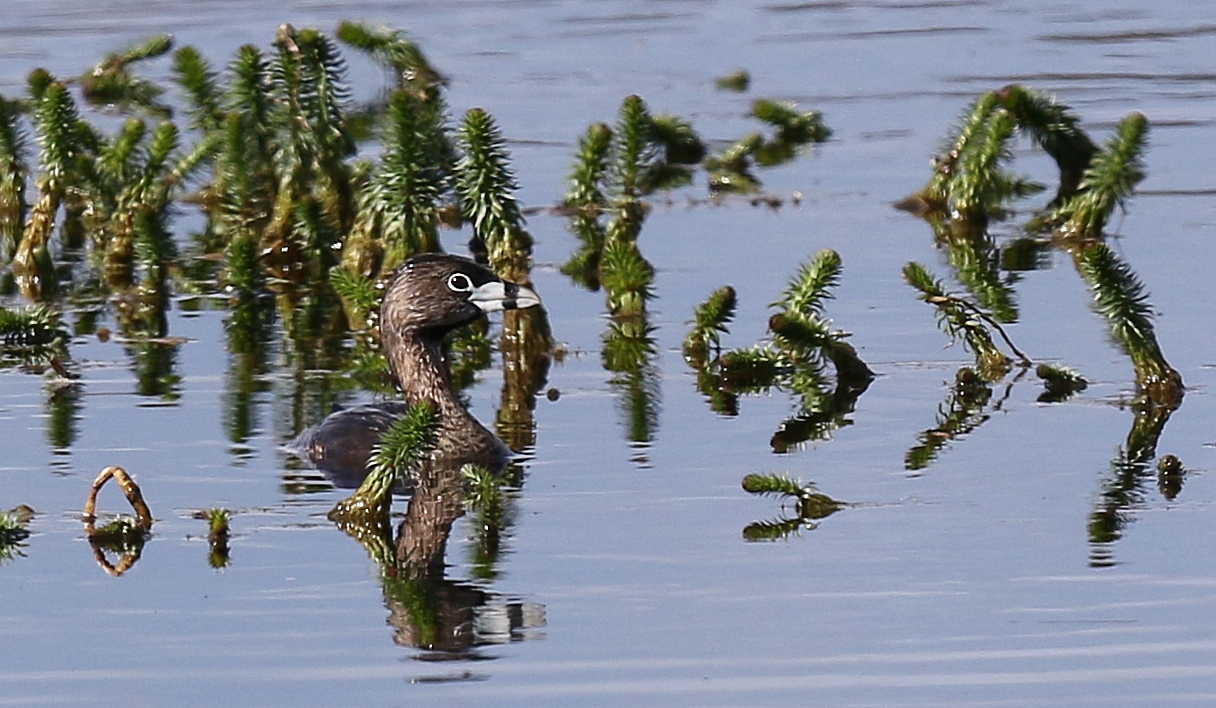
Pied-billed Grebe, Leighton Moss RSPB, Lancashire (Photo: Geoffrey Pain)
After a 10-day absence during which almost everyone had accepted that it had moved on, it was a real surprise to see the young male Harlequin Duck back on the River Don in Aberdeen from 26th. The female at Brora, Highland, was reported consistently throughout the week and was still there on Tuesday.
A good concentration of White-billed Divers, most now looking resplendent in their summer dress, were off north Aberdeenshire during the week. At least eight were seen on 22nd, while a boat trip on 28th produced six between Portsoy and Cullen, Moray/Nairn. Another was still off Burray, Orkney, while late news concerned a bird off Rosemullion Head, Cornwall, on 17th.
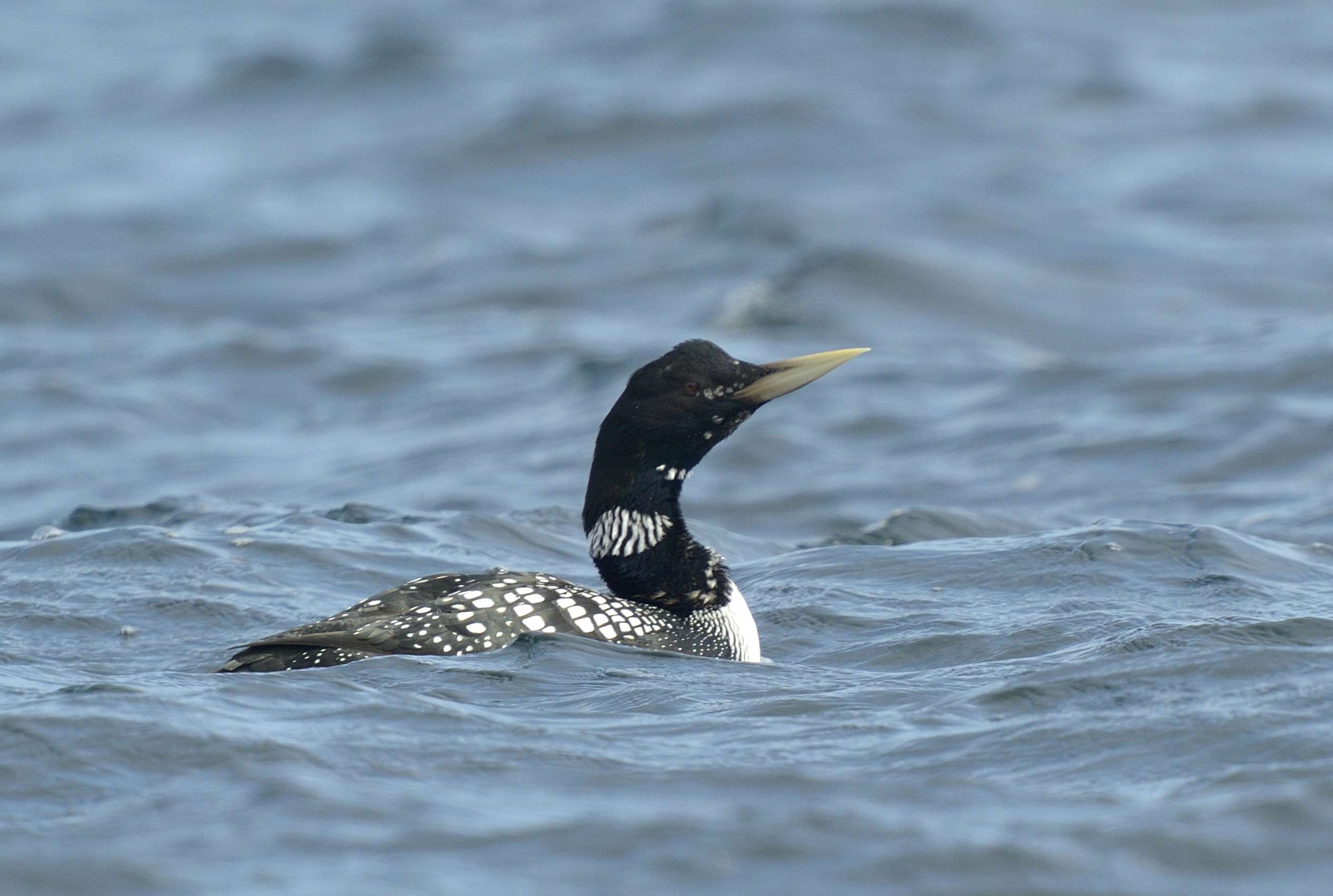
White-billed Diver, Portsoy, Aberdeenshire (Photo: Baz Scampion)
'Elvis' the drake King Eider continued to perform admirably on the Ythan Estuary, Aberdeenshire, throughout the week, but the only Surf Scoter report concerned a lone drake still off Hoylake, Cheshire, on 23rd. Lesser Scaup stuck around in Glamorgan and Ayrshire, while three Ring-necked Ducks were still at Standlake, Oxon, to 26th at least; the drake at Knockaderry Lake, Co Waterford, was reported for the first time in a month and the County Donegal bird remained at Blanket Nook.
Neither American Black Duck was reported this week, but a new American Wigeon was discovered at Holywell Pond, Northumberland, on 22nd. Apart from a couple of sorties to nearby St Mary's Island it remained there to the week's end and was one of three reported this week, the others still in County Wexford and Orkney. Lincolnshire's drake Blue-winged Teal extended its stay at Donna Nook by a week. A new Green-winged Teal was found in the county at Alkborough Flats from 24–27th, and other Green-winged Teal were in Somerset, Staffordshire and on the Isles of Scilly. Two Black Brants were seen in Lincolnshire, while a white-morph Snow Goose at Cahore, Co Wexford, on 22nd could easily have been a wild bird.

American Wigeon, St. Mary's Island, Northumberland (Photo: Colin Bradshaw)
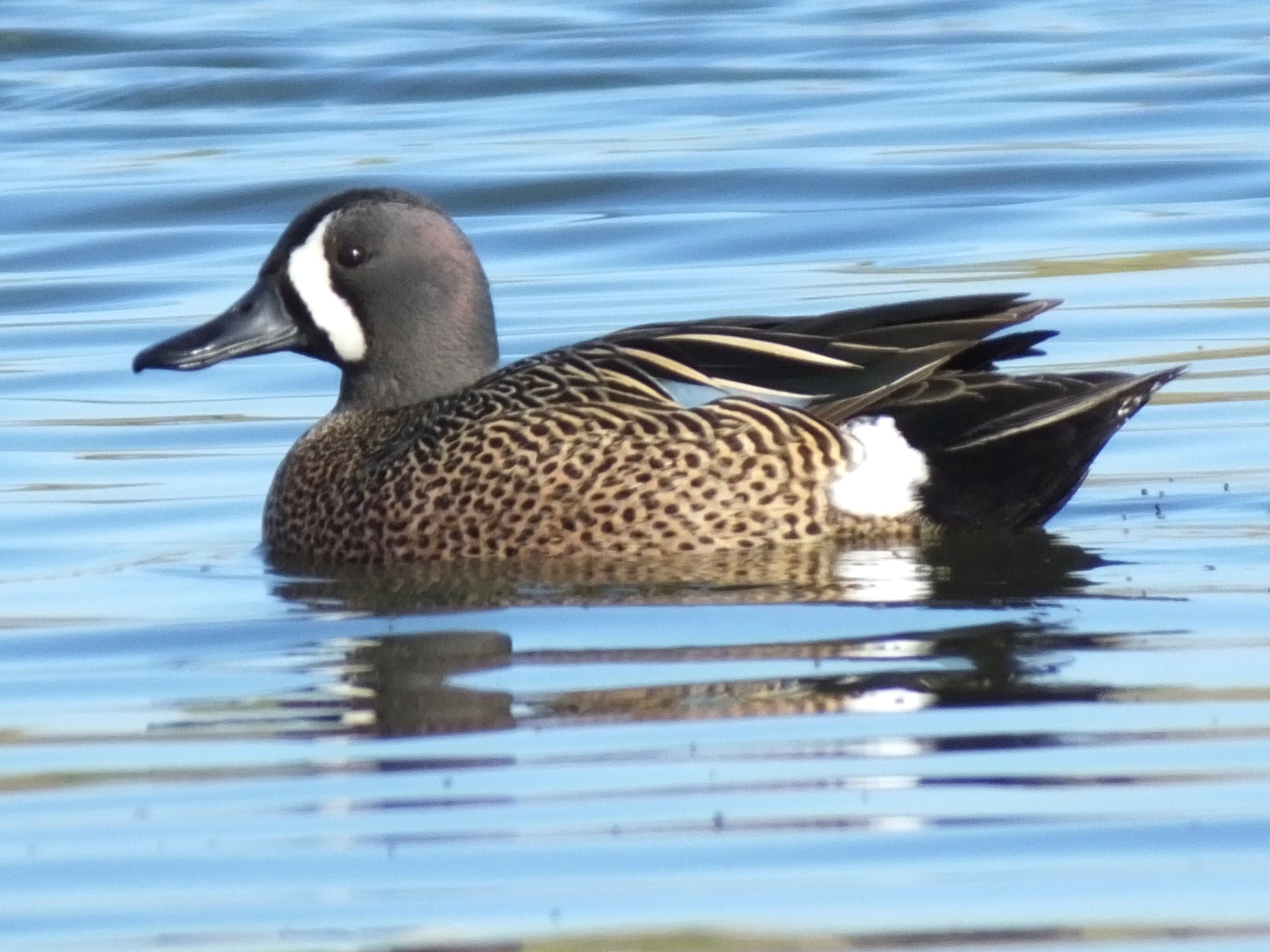
Blue-winged Teal, Donna Nook, Lincolnshire (Photo: Steve Smith)
An impressive report of at least six Night Herons on St Mary's, Scilly, at dusk on 21st could not be replicated though three were seen on 23rd; another was on Bryher on 27th. Late news concerned an adult in Bournemouth, Dorset, on 21st, while two flew over Kinsley, W Yorks, on 23rd and an adult obliged at Attenborough, Notts, on 26–27th. The Purple Heron was again reported from Drift Reservoir, Cornwall, early on 28th and two Cattle Egrets continued at Dungeness, Kent. A White Stork was photographed at Solva, Pembrokeshire, on 22nd but reports from east Norfolk presumably refer to wandering escapes. Glossy Ibises stayed put in Nottinghamshire and Cambridgeshire.
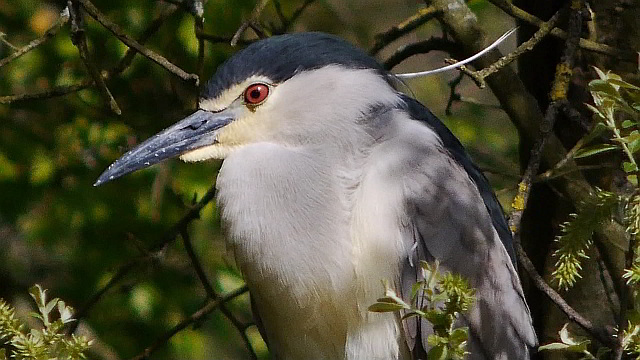
Night Heron, Attenborough NR, Nottinghamshire (Photo: Alan Shaw)
Last week's adult White-tailed Eagle was over Thurne, Norfolk, on 23rd and then tracked offshore between Salthouse and Burnham Overy on 25th; it was seen later that day at Holme before crossing The Wash and making its last appearance over Gibraltar Point, Lincs, at 15:15. A Black Kite was tracked between Spurn and Skeffling, E Yorks, on 22nd, with presumably the same bird then at Arncliffe, N Yorks, the following day. There were two reports from Norfolk on 25th, one from Penberth, Cornwall, on 27th and three from Mainland Shetland on 26–27th.

Black Kite, Exnaboe, Mainland, Shetland (Photo: Roger Riddington)
Rough-legged Buzzards were again prominent, the Yorkshire coast particularly prospering; the peak count was of two over Spurn on 25th. Displaying Montagu's Harriers were reported by the RSPB from an East Yorkshire reserve while migrants were seen in Somerset, East Sussex and Essex. A male Snowy Owl on Termon Hill near Blacksod, Co Mayo, was the first record at this site since the returning female was last seen in summer 2012.

Snowy Owl, Blacksod, Mayo (Photo: Dave Suddaby)
After a fantastic spread of records last week it was disappointingly quiet for Black-winged Stilts, with two on Jersey on 22nd and two at Trimley Marshes, Suffolk, on 26th. The Greater Yellowlegs was again seen briefly at Titchfield Haven, Hants, on 25th and the first White-rumped Sandpiper of the spring turned up on Papa Westray, Orkney, on 25th, lingering to the week's end. A couple of Kentish Plover records involved typically brief birds: at Cley, Norfolk, on 25th and Pegwell Bay, Kent, on 26th.

White-rumped Sandpiper, Papa Westray, Orkney (Photo: Alastair Forsyth)
A number of Dotterel trips appeared at traditional locations throughout the week — not least Pendle Hill, Lancs, which welcomed back up to four birds. Seven were at Todmorden, W Yorks, on 28th and five at Foel Grach, Conwy, that day; four were near New Galloway, Dumfries & Galloway, on 27th and three visited Wallasea Island, Essex, briefly on 26th. Up to five were again near Choseley, Norfolk, while an impressive eight were seen near Slyne Head, Co Galway, on 28th following the discovery of four a few days previously.
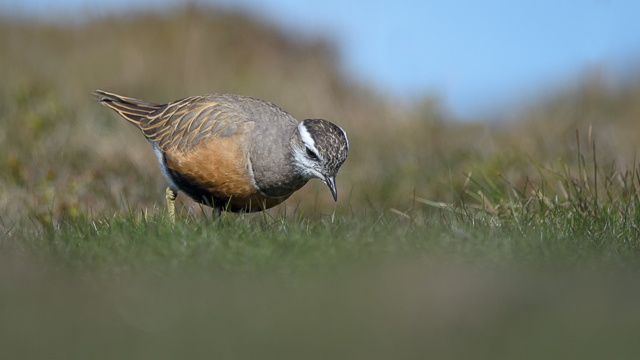
Dotterel, Pendle Hill, Lancashire (Photo: David Clegg)
The Laughing Gull was still at Ballycotton, Co Cork, on 26th, while the first-summer Ring-billed Gull continued in the Hayle area of Cornwall and another of the same age was at Daventry Country Park, Northants, on 22–23rd. There was a reasonable passage of Little Gulls early in the week, with peak counts on 23rd including 44 at King George V Reservoir, London, and 41 at Grafham Water, Cambs.
Smaller numbers of Black and Little Terns (including nine of the latter at Staines Reservoirs) were also associated with this push, though Arctic Tern passage hasn't really got going yet: there were no particularly massive counts seen across Midlands waterbodies. An early White-winged Black Tern was a nice surprise at Broom Gravel Pits, Beds, on 24th and a probable Whiskered Tern was glimpsed at Blithfield Reservoir, Staffs, the following day.

White-winged Black Tern, Broom GPs, Bedfordshire (Photo: Josh Jones)
As you'd expect following early April's influx, Eurasian Hoopoes were again prominent, with a good number of twitchable birds seen well inland. Wryneck numbers numbered around 20–25 and Golden Oriole records included at least three on Bryher, Scilly, a couple in Cornwall and another at Tacumshin, Co Wexford.

Hoopoe, Tandle Hill CP, Greater Manchester (Photo: Mike Killelea)
An Alpine Swift cruised over Meols, Cheshire, on 22nd, and seven Red-rumped Swallows included the impressive sight of one flying in off the sea at Birling Gap, E Sussex, on 22nd. Others were in Devon, Dorset, Kent (2), East Yorkshire and on Scilly, this last being the only one to linger (on St Agnes from 25–27th). A Short-toed Lark also graced St Agnes from 22–24th, while a Richard's Pipit was noted at Gibraltar Point, Lincs, on 22nd. A Red-throated Pipit flew over Hengistbury Head, Dorset, on 24th, an apparent Spanish Wagtail was brief at Filey, N Yorks, on 22nd and a probable Ashy-headed Wagtail was at Burnham Overy, Norfolk, on 25th.

Spanish Wagtail, Filey, North Yorkshire (Photo: Mark Pearson)
A Bluethroat trapped and ringed on St Mary's, Scilly, on 25th was the only individual of its kind this week. Both of this week's subalpine warblers were in Cornwall: at Land's End on 22nd and Kenidjack on 25th. West Cornwall also scored a new Woodchat Shrike — at Porthgwarra on 27th — and the Ramsey Island bird was still there on 22nd. A female Serin was at Landguard, Suffolk, on 23rd with a good count of three there on 26th. An early male Common Rosefinch was singing in Cromer, Norfolk, on 22nd while, also in the county, a Little Bunting was at Snettisham from 22–26th and had apparently been present since the previous weekend. Another at Flamborough Head, E Yorks, on 27–28th could well have been the bird photographed there earlier in April.

Serin, Landguard NR, Suffolk (Photo: Chris Mayne)

Little Bunting, Snettisham Coastal Park, Norfolk (Photo: Oliver Reville)
Western Palearctic news
A near-adult Kelp Gull at Costa da Caparica, just south of Lisbon, Portugal, on 27–28th was a sensational find and closely follows two records in the country in 2013. Whether this represents a genuine upturn in records or simply greater identification awareness remains to be seen, but it certainly appears that this species (the African vetula subspecies of which is sometimes known as Cape Gull) is now very much on the radar for gull-watchers in Western Europe.
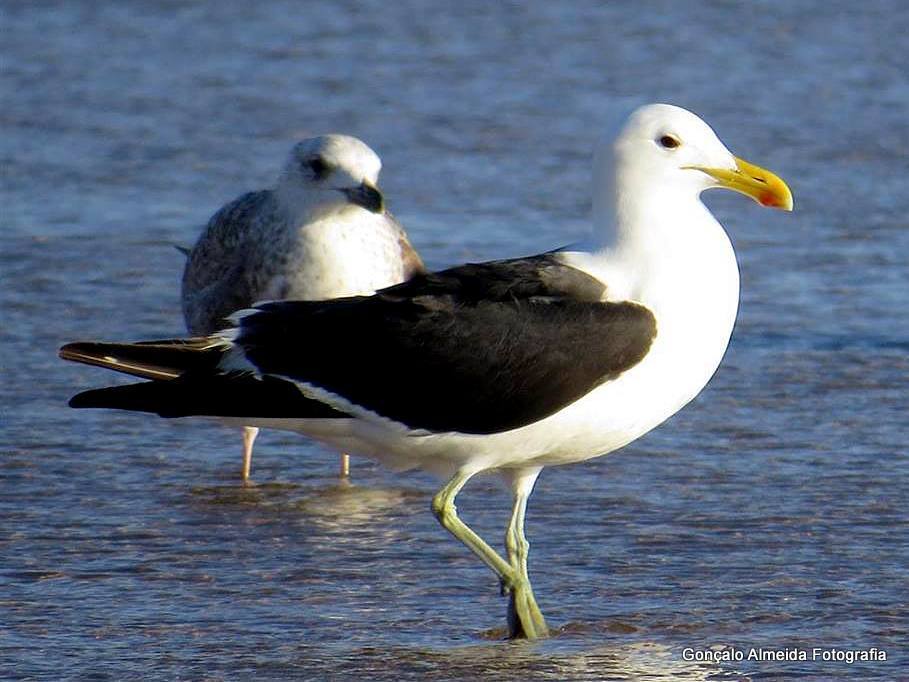
Cape Gull, Portugal (Photo: Gonçalo Almeida)
The Black-browed Albatross was present on Heligoland, Germany, until 23rd when it flew out to sea; presumably it will be back again soon. Late news concerned a stunning Black-throated Accentor in gardens in Halmstad, Sweden, until 18th. At least one Black-winged Kite was seen in Denmark during the week, while Norway's sixth Little Bustard was in Telemark on 24th. An adult Demoiselle Crane was among Common Cranes in Oulu, Finland, over the weekend. Something of a surprise was a Green-backed Heron photographed at Sestri-Levante, Italy, on 20th; its origins are currently unknown. Meanwhile, in the Netherlands, the Thayer's Gull was still present to 27th at least.
Photo of the Week, 22—28 April

Blue Tit, Heswall, Cheshire (Photo: Charles Farnell)
With the nesting season in full swing there have been many postings of singing, displaying and mating birds this week, writes Steve Young. Joining the action was this Blue Tit busily collecting nest material, superbly caught by Charles Farnell.
Tugging on what appears to be some sort of animal hair, you can see the effort in the bird's eyes as it strains to pull the snagged hair away from the bramble.
An opportunistic shot by Charles and one that has been captured beautifully, with nice light and a perfect background all adding to a very seasonable image; congratulations to Charles on his POTW.
Other notable images

Great Crested Grebe, Chew Valley Lake, Somerset & Bristol (Photo: Carl Bovis)

Spanish Sparrow, Malta (Photo: Natalino Fenech)

Eleonora's Falcon, Cyprus (Photo: Russell Hayes)

Little Grebe, undisclosed site, North Yorkshire (Photo: Mike McKenzie)

Pied Flycatcher, undisclosed site, Shropshire (Photo: Tony Webb)

Northern Wheatear, Bardsey Island, Gwynedd (Photo: Ben Porter)

Sand Martin, Hengistbury Head, Dorset (Photo: Joe)

Great Crested Grebe, undisclosed site, Staffordshire (Photo: Graham Allbutt)

Wood Warbler, Llandrindod Wells, Powys (Photo: Kev Joynes)

Mute Swan, Andover, Hampshire (Photo: Jan Galko)

Garden Warbler, Lackford Lakes SWT, Suffolk (Photo: Barry Woodhouse)

Great Bustard, Spain (Photo: John Anderson)

Grey Heron, Leighton Moss RSPB, Lancashire (Photo: David Moreton)


